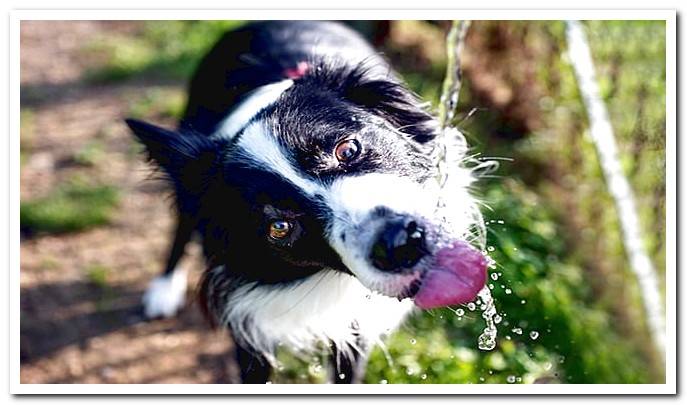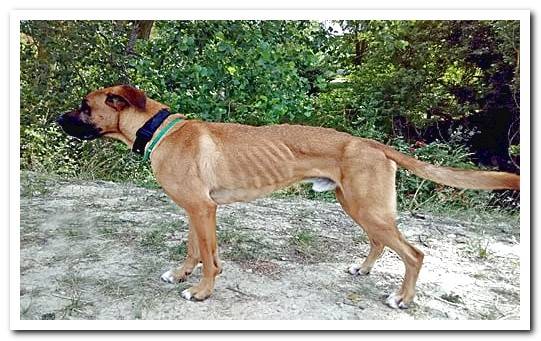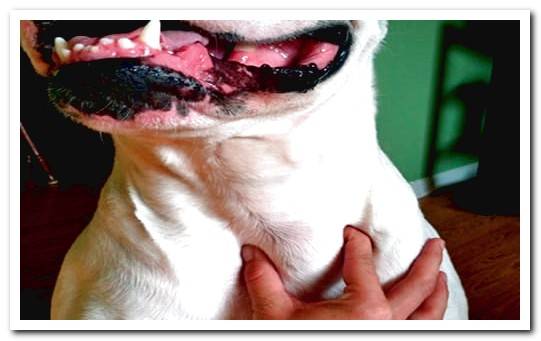
Although it is not common, there is also hyperthyroidism in dogs and it should be treated as soon as possible to prevent our furry friend’s health from worsening.
Des Dogsis will talk about this disease in detail, so that you can better understand how it can affect it. As its name suggests, it has a lot to do with the thyroid gland.
In addition, we will detail the causes of canine hyperthyroidism, the most common symptoms and treatments. Ready to get into the matter? Well, let’s start now.
Index of contents
- 1 What is hyperthyroidism in dogs?
- 2 Symptoms of hyperthyroidism
- 3 How is canine hyperthyroidism detected?
- 4 Treatment of hyperthyroidism in dogs
What is hyperthyroidism in dogs?
When the thyroid gland, which regulates metabolism, produces more hormones than normal, there is a disorder known as hyperthyroidism. If the opposite occurs and there is a hormonal deficit, then we speak of hypothyroidism. Both disorders are different and should not be confused.
The causes of hyperthyroidism in dogs can be various, such as a malformation of the gland or the appearance of a tumor, which is usually the most frequent. Sometimes, it may also be due to an immune system disorder It attacks the tissues that line the gland, causing it to react, secreting more hormones.
In any case, it will be the veterinaryn who determines what type of disease the dog suffers after carrying out the relevant tests. So how do you know that something is wrong with your thyroid and that you need the help of a professional? Let’s see the warning signs that this disease shows.

Symptoms of hyperthyroidism
The main symptoms that we can find in a case of hyperthyroidism in dogs are the following:
- The dog is much more hungry and consumes more water than before, so it also urinates more often.
- Although he eats more, he is losing weight.
- You have tachycardia and tremors.
- You have skin wounds, redness and hair loss.
- Hair may also look rough and dull.
- He is nervous or anxious for no apparent reason.
- You have a lump on your neck.
- You may have a cough or trouble breathing.
- You vomit and have diarrhea often.
- He cannot bear the heat, something that leaves him especially exhausted and without the desire to carry out any activity.
If the cause of hyperthyroidism is a tumor, you should be aware that there may be other related symptoms. Females are usually more likely than males to suffer from this disorder.
And which races does it affect the most? Well, normally dogs of medium or large breeds, such as golden retrievers, Labradors, the cocker spaniel or the doberman.
On the other hand, hyperthyroidism usually manifests gradually, so it may take a while for us to realize that there is a problem. The normal thing is that we begin to suspect when the symptoms become more evident in the dog.
How is canine hyperthyroidism detected?
When, upon detecting some of these symptoms, we take our furry companion for a review, the vet will take note of all the signs and perform a physical examination of the dog. I may also do X-ray tests and an ultrasound to see if there is a tumor and if it metastasizes. That is, if it has spread to other parts of the body.
In these cases, a blood sample is also usually taken, which will allow determining which are the values of the T4 hormone produced by the thyroid. All this will serve to make a final diagnosis and know which way to go when it comes to treatment. What is usually the most common? Let’s see.

Treatment of hyperthyroidism in dogs
Let’s imagine that we have gone to see the vet, that our furry friend has already had analytical tests and that the diagnosis has been confirmed: he suffers from hyperthyroidism and the disorder is caused by a tumor. Surely you ask yourself, now what? Well, the next step is to start with a treatment, which will depend on the type of tumor, its size and whether it is necessary to completely remove the thyroid gland or not.
Chances are they will recommend surgery. However, the vet may also prescribe mediation or radiation therapy sessions to make the tumor shrink if it is not operable. If surgery is performed, one of the complications that can occur is excessive blood loss, since the thyroid is in a highly irrigated area. In such a case, a transfusion may be required.
Once the dog has left the operating room, we will have to make sure that the indicated medication is taken, without forgetting any dose. We will also have to monitor the level of hormone T4 to see if the problem has disappeared and, above all, take great care of our furry friend so that he recovers as soon as possible.
